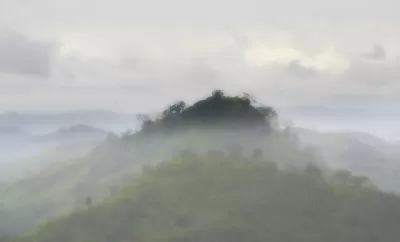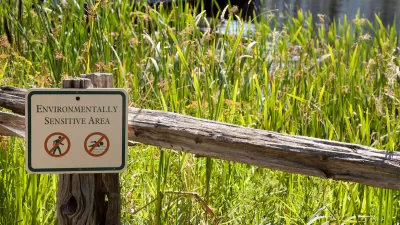As many as 1 million species are at risk of extinction if the world, including planning professionals and politicians, doesn't make big changes.

"The great biodiversity of Earth is diminishing so fast that we are now in an extinction crisis," according to an article by Brian Resnick.
"In the past decade, 467 species have been declared extinct (though they might have gone extinct in decades prior), according to the global authority on species conservation status, the International Union for Conservation of Nature, or IUCN. Others have been brought to the brink and still more are seeing serious declines in their population numbers."
The decade has also produced new knowledge about the causes and scope of species loss, as documented thoroughly in the article. The article also includes a list of the five root cases of the biodiversity crisis. Number one on the list: changes in land and sea use.
Resnick explains: "The area of the world that’s been unaltered and untouched by humans is shrinking all the time. And when it shrinks, so does room for nature. A third of the world’s land, the report finds, is currently reserved for agriculture or livestock. Around 100 million hectares (a hectare is 10,000 square meters, or about 2.47 acres) of tropical forest disappeared between 1980 and 2000."
Climate change and pollution also make the list.
FULL STORY: The species the world lost this decade

Planetizen Federal Action Tracker
A weekly monitor of how Trump’s orders and actions are impacting planners and planning in America.

Maui's Vacation Rental Debate Turns Ugly
Verbal attacks, misinformation campaigns and fistfights plague a high-stakes debate to convert thousands of vacation rentals into long-term housing.

Restaurant Patios Were a Pandemic Win — Why Were They so Hard to Keep?
Social distancing requirements and changes in travel patterns prompted cities to pilot new uses for street and sidewalk space. Then it got complicated.

In California Battle of Housing vs. Environment, Housing Just Won
A new state law significantly limits the power of CEQA, an environmental review law that served as a powerful tool for blocking new development.

Boulder Eliminates Parking Minimums Citywide
Officials estimate the cost of building a single underground parking space at up to $100,000.

Orange County, Florida Adopts Largest US “Sprawl Repair” Code
The ‘Orange Code’ seeks to rectify decades of sprawl-inducing, car-oriented development.
Urban Design for Planners 1: Software Tools
This six-course series explores essential urban design concepts using open source software and equips planners with the tools they need to participate fully in the urban design process.
Planning for Universal Design
Learn the tools for implementing Universal Design in planning regulations.
Heyer Gruel & Associates PA
JM Goldson LLC
Custer County Colorado
City of Camden Redevelopment Agency
City of Astoria
Transportation Research & Education Center (TREC) at Portland State University
Jefferson Parish Government
Camden Redevelopment Agency
City of Claremont





























